August reading wrap-up 📚
what I read for Women in Translation month and Buwan ng Wika
My friends,
August was so long! Aside from several personal problems piling up, my country is knee deep once again in a corruption scandal that will anger even the most apolitical member of your family. It started with the President calling on an audit of all flood control projects in recent years. Turns out, government funds for these projects where flowing into the pockets of corrupt politicians and “their” contractors. Here’s a great post from
if you want to dig deep into this issue.I hope September will be better. There is a certain festive air that drops when the 1st of September arrives after all.
Everything I Read in August
I’ve only read 4 books this month but I had enjoyed every single one of them. Let’s get started.
My Brilliant Friend by Elena Ferrante, translated by Ann Goldstein
I devoted myself to studying and to many things that were difficult, alien to me, just so I could keep pace with that terrible, dazzling girl.
My Brilliant Friend is a story about the complex friendship between Elena Greco (Lenù) and Raffaella Cerullo (Lila) and growing up in a neighborhood rife with poverty and violence in post-war Naples. Their friendship, although often full of jealousy and rivalry, is also full of love, admiration, devotion and dependence. The girls are competitive towards each other and tries to sabotage the other. Yet, both girls can’t live without the other.
Name any list of books about female friendships and My Brilliant Friend will always be there. Ferrante's portrayal of this complex and often fraught relationship is incredibly nuanced. I often wonder if this is true friendship because Lila can sometimes be terrible to Lenù. Lenù resents Lila so often that her mind is always troubled and never at peace, such a terrible burden to bear when you are young. Is it friendship if the other person tears you down?
I love how this book captures a particular set of people in a particular place and time. I am a big fan of flowery prose that sweeps me away. With My Brilliant Friend though, even if the writing is simple, straightforward, and immediate, I was on the edge of my seat the whole time. I attribute it to the richness of the characters Ferrante has created. Not only does she creates this layered and complicated friendship of Lenù and Lila's, but she creates this neighborhood that's so vivid you'll feel like you're Mr. Scrooge in A Christmas Carol watching how a scene plays up.
I feel no nostalgia for our childhood: it was full of violence.
This neighborhood comes alive through the actions of our secondary characters. We feel the violence present in every corner of the neighborhood through the young men who learned that violence is the answer to every perceived slight and that they should always show their dominance over another. We imagine a household where a father easily beats up his children due to whatever frustration the day brings. And these children, in turn, beat other children. We hear the loudness of angry mothers shouting everyday with rages that does not seem to end. I felt the claustrophobia Lila felt when she thought she can't get out of her economic situation and of the town. I can feel how Rino, Lila's brother, once a hero to Lila, slowly becomes just like every other man in the neighborhood - cruel and violent.
There is a poverty that makes us all cruel.
One of my favorite parts of the book was when the girls bought a copy of Little Women. The book eventually became a bigger symbol in the girl's lives especially in their perception of wealth. Both girls know early on that education is their escape against poverty. But when opportunity to study further is taken from Lila, she thinks of other ways to alleviate her and her family's economic hardships. This core theme ultimately drives the decisions they make all throughout the book. Even though the paths they take as they grow older differ, Lenù and Lila are entwined souls who rely on each other to fight against the dire circumstances they were born into.I love how the girls, competitive as they are, try together to get out of poverty and of the "before" and end generational violence. I teared up a little bit when we learned who truly is “the brilliant friend”.
I am eager to read the rest of the series but my current pile of TBR will not allow me.
Lasa ng Republika Dila at Bandila: Ang Paghahanap Sa Pambansang Panlasa Ng Filipinas by Ige Ramos
In English, this title means Taste of the Republic Tounge and Flag: Search for the National Palate of the Philippines. It's a short book, more of a long essay, where the author goes on a quest to find the national palate of the Filipinos. He starts by asking "What is Filipino food?". He then goes on to fuel the discourse surrounding what the national food of the Philippines is. Because the Philippines have been colonized by more than 300 years and by three different countries, so much influence has been brought in by these countries in terms of ingredients and method of cooking. This cross-cultural influence brought about a unique cuisine. We Filipinos love to indigenize foreign things after all. Not only that, trade from neighboring countries is another pathway of how certain favorite Filipino dish came about to the Philippines. And so, the author asks instead "How does food become Filipino?" A question originally posed by Doreen Fernandez in her book Tikim - one of my favorite books this year. He then discusses how many Filipino favorite foods came to be.
I discovered a lot of dish totally unknown to me but really popular in the northern part of the Philippines such as sinudsod and bringhe. I hope to taste these dishes the next time I happen to be in Luzon even though these dishes can easily be recreated at home.
By the end of the book, Ramos tells us what he thinks the national food should be. I love his answer which didn't surprise me at all.
Memories of the Memories of the Black Rose Cat by Veerapon Nitiprapha, translated by Kong Rithdee
Spanning three generations of a Chinese-Thai family, this book chronicles the life of an immigrant family and explores the roots of the Chinese diaspora in Siam. The book starts with Great Grandpa Tong moving to Siam from impoverished rural China to work for a relative. From there he meets his wife, builds a large family and house, becomes a rich rice trading tycoon, only to lose it all before he dies.
The book is set in Thailand's most tumultuous decade. We see the family live out in a boathouse as World War II breaks out for fear of losing their wealth. We see Great Grandpa Tong goes into depression as he loses his property investments as China turns red. We see his sons get involved in a tangle of power struggle, coups, and rebellion. So much happens to this family that you’ll wonder if anybody really gets this much bad luck.
This book is very much like One Hundred Years of Solitude. Magical realism aside, it has the same tragic melancholic tone. Much like the characters of One Hundred Years of Solitude, each family member has their own ghosts, burdens, and sins, which each lead to their own downfall. I really enjoyed reading about the family’s life and didn’t notice time pass by. By the end of the book, we get to know why this book is titled as such.
The Third Love by Hiromi Kawakami, translated by Ted Goossen
I have long wanted to read Kawakami's Strange Weather in Tokyo because of its quirky covers but I get easily distracted by other books. Finding books to read for Women in Translation Month, I remembered I already had an ARC of her latest novel The Third Love and so I thought to dip my toes around Kawakami's body of work through this book. I loved this book but I think it was not the best book to start with.
The Third Love is centered around Riko, a young woman who feels trapped in her marriage with her childhood sweetheart who's always cheating on her. We meet Riko when she was just in kindergarten but already in love with her soon-to-be-husband, Naa-chan. After school, Naa-chan and Riko immediately gets married despite Riko's knowledge of Naa-chan's other love affairs. Despite warnings from her mother, Riko naively accepts Naa-chan's infidelity. Riko's marriage falls apart when she discovers her husband is heartbroken. But not for her. For another woman.
Shortly after this, she meets and old friend, Mr. Takaoka, who used to be a janitor in her old primary school. Mr. Takaoka teaches Riko the magic to dream herself into the past. Every night she dreams and lives an alternate life - first as an oiran (high-ranking courtesan) in Tokugawa-Era Japan and second as a lady-in-waiting to a Heian Era princess.
Riko's dream lives allows her to discover what it means to be a woman, a wife, and a mother. Her time traveling provides an avenue to reflect on her relationship with her husband. Riko contemplates the pros and cons of the limited freedom of women before and their role in society. Kawakami explains that the freedom and privileges women have today are not all sunshine and roses. I love what Kawakami was trying to say in the book even though I didn’t like the writing that much.
I love that this book references classic Japanese literature such as The Tales of Ise, The Prince of Genji, and Takaoka’s Travels. Particular scenes repeat in Riko's real and both of her dream lives. It was fun to figure out that little literary puzzle.
What I want to read in September
I am less than one hundred pages away from The Buried Giant but nothing is wrapping up in my reading. Excited to see what Ishiguro has in store for me in this book though. Also excited to read The Netanhayus. I was told it’s really good and well deserved of The Pulitzer Prize.
Have you read any of the books I mentioned above? If yes, let me know which ones and if you liked them.
In case you missed this..
Everything in this newsletter is free for now. And so, every open, like, comment, or restack means a lot to me and I thank you all for your support. If you’d like to further support me, buy me a coffee so that I can continue this work. Thanks again for reading and remember, folks, to read books out of the social media algorithm!


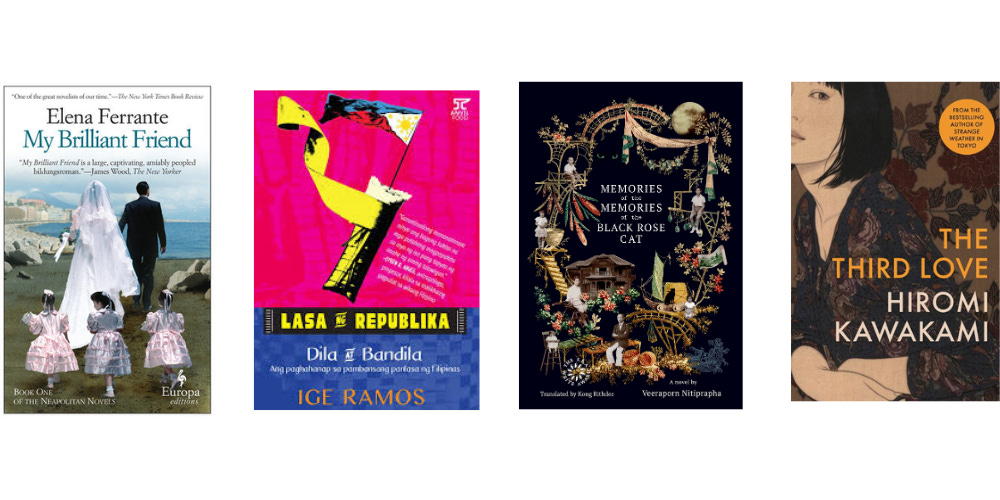
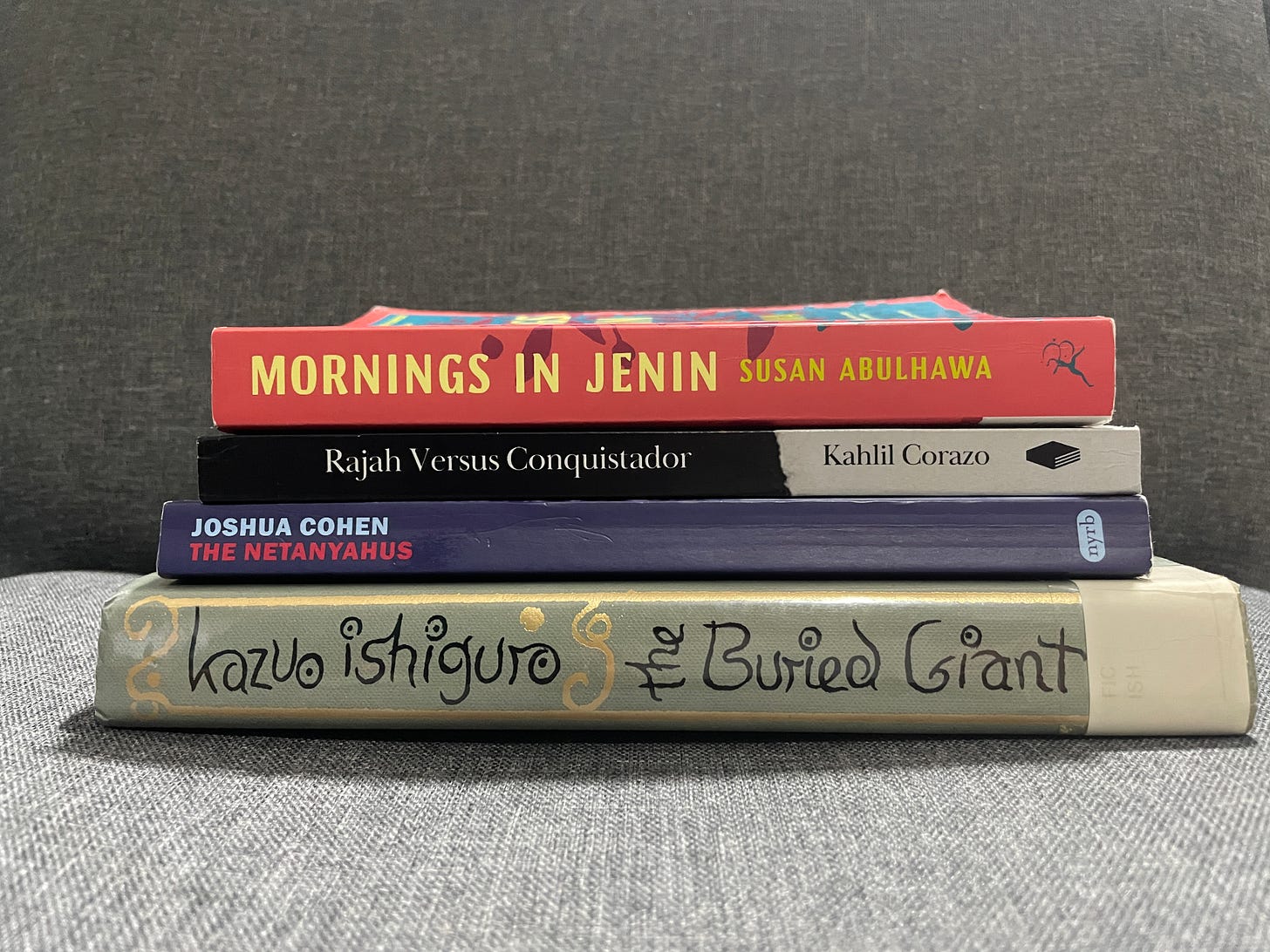
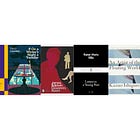
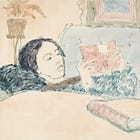
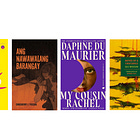
I’ve just finished my brilliant friend and I feel the same! Really keen to read the quartet, but have so much I want to read before end of year! maybe will draw it out and wait until next summer!